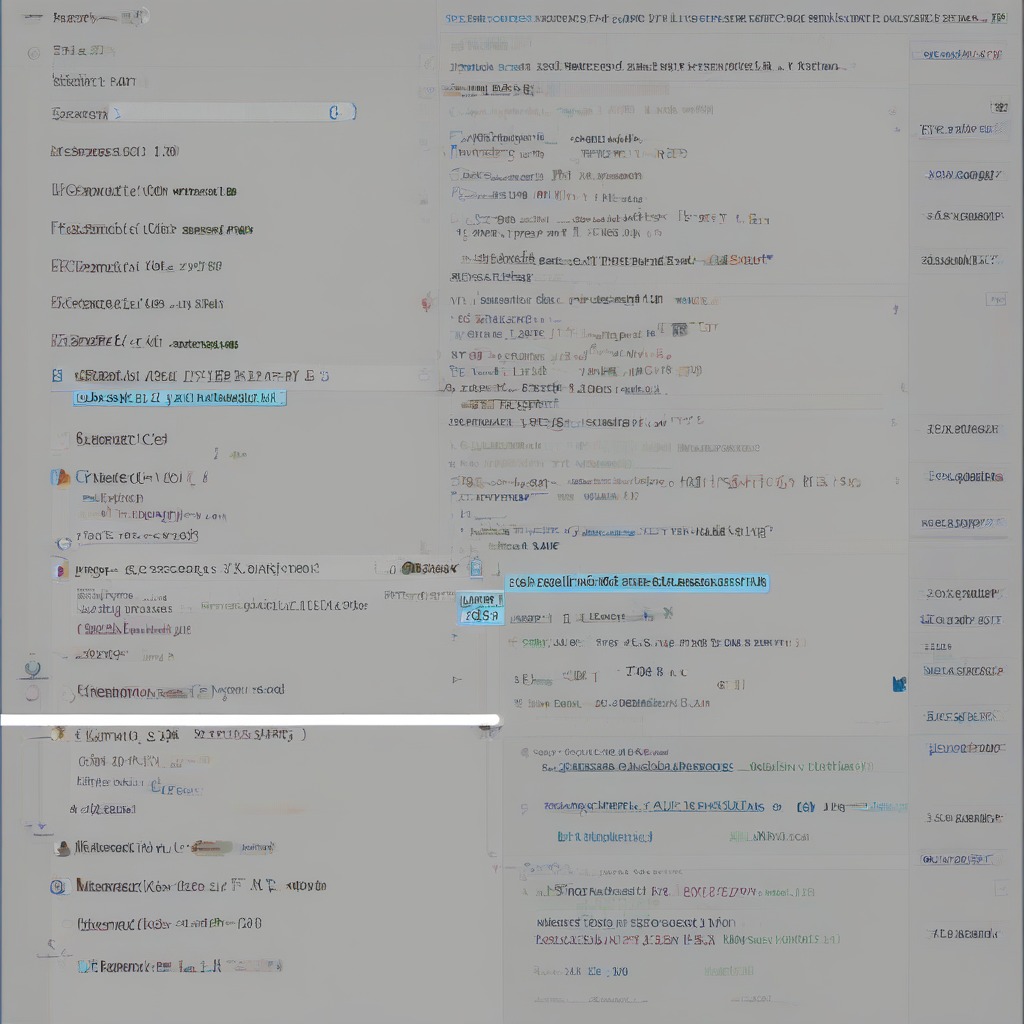Boost Your Website’s Visibility: A Comprehensive Guide to Improving Search Engine Rankings
In today’s digital landscape, having a website that ranks high on search engines like Google is paramount to achieving online success. A strong search engine presence translates to increased organic traffic, higher brand awareness, and ultimately, more leads and conversions.
This comprehensive guide will equip you with the knowledge and strategies to improve your website’s search engine rankings, unlocking its true potential and propelling your online endeavors to new heights.
Understanding the Fundamentals of Search Engine Optimization (SEO)
Search engine optimization (SEO) is the process of improving your website’s visibility and ranking in organic search results. It involves a series of strategies and tactics that enhance your website’s relevance and authority in the eyes of search engines.
At its core, SEO revolves around understanding how search engines work and optimizing your website accordingly. Search engines use complex algorithms to crawl, index, and rank websites based on various factors, including:
- Relevance: How well your website content matches the search query.
- Authority: The credibility and trustworthiness of your website.
- User Experience (UX): How user-friendly and engaging your website is.
- Technical Factors: The technical aspects of your website, such as website speed and mobile responsiveness.
- Backlinks: Links from other websites to your website, indicating trust and authority.
On-Page Optimization: Crafting a Search Engine-Friendly Website
On-page optimization focuses on optimizing individual pages of your website to improve their visibility in search engine results. This includes:
Keyword Research and Targeting
Keyword research is the cornerstone of on-page optimization. It involves identifying relevant keywords that your target audience uses to search for information related to your products or services.
- Understanding Search Intent: Identify the intent behind search queries (e.g., informational, transactional, navigational).
- Keyword Tools and Resources: Utilize tools like Google Keyword Planner, Ahrefs, and SEMrush to discover high-volume, low-competition keywords.
- Long-Tail Keywords: Target long-tail keywords (more specific phrases) to attract highly qualified traffic.
Content Optimization
Creating high-quality, relevant content that resonates with your target audience is crucial for SEO success.
- Keyword Integration: Strategically incorporate your target keywords into your page title, headings, subheadings, and body text.
- Content Structure and Format: Structure your content with clear headings, subheadings, and bullet points to enhance readability and scannability.
- Original and Valuable Content: Focus on providing fresh, insightful, and valuable content that addresses your audience’s needs and interests.
- Content Length and Depth: Create comprehensive, in-depth content that provides a thorough and informative experience for readers.
Meta Descriptions and Title Tags
Meta descriptions and title tags are snippets of text that appear in search engine results pages (SERPs), providing a brief overview of your page’s content.
- Compelling Title Tags: Write concise, relevant, and attention-grabbing title tags that accurately represent your page’s content and include your target keywords.
- Informative Meta Descriptions: Craft compelling meta descriptions that entice users to click on your listing in search results.
- Character Limits: Keep in mind the character limits for title tags and meta descriptions to ensure they are displayed correctly in SERPs.
Image Optimization
Optimizing images on your website is essential for improving search engine rankings and enhancing user experience.
- File Size Optimization: Reduce image file sizes without compromising quality to improve page load speed.
- Descriptive File Names: Use descriptive file names that include your target keywords to improve image searchability.
- Alt Text: Provide descriptive alt text for images to make them accessible to visually impaired users and improve image indexing by search engines.
Internal Linking
Internal linking involves linking to relevant pages within your website, creating a network of interconnected content.
- Strategic Linking: Link to related pages using relevant anchor text that includes your target keywords.
- Navigation and User Experience: Use internal links to enhance website navigation and guide users to valuable content.
- Page Authority Boost: Internal links help distribute page authority throughout your website, improving the ranking of individual pages.
Off-Page Optimization: Building Authority and Trust
Off-page optimization refers to activities undertaken outside your website to enhance its visibility and authority in search engines.
Backlink Acquisition
Backlinks are links from other websites to your website, serving as a vote of confidence from other websites.
- High-Quality Backlinks: Focus on acquiring backlinks from reputable and relevant websites within your industry.
- Guest Blogging: Contribute guest posts to high-authority blogs in your niche, earning backlinks and establishing your expertise.
- Broken Link Building: Identify broken links on other websites and offer to replace them with links to your relevant content.
- Directory Submissions: Submit your website to relevant online directories to increase your website’s visibility and acquire backlinks.
Social Media Marketing
Social media platforms can play a significant role in boosting your website’s SEO efforts.
- Share Your Content: Share your website’s content on social media to drive traffic and increase brand awareness.
- Engage with Your Audience: Interact with your followers, respond to comments, and build a community around your brand.
- Social Signals: Social media shares and engagement can indirectly contribute to improved search engine rankings.
Local SEO
Local SEO is essential for businesses targeting customers in a specific geographic area.
- Google My Business (GMB): Create and optimize your GMB listing to improve your visibility in local search results.
- Local Citations: List your business information (name, address, phone number) on reputable online directories.
- Geo-Targeted Keywords: Incorporate location-specific keywords into your website content and meta descriptions.
Technical SEO: Ensuring a Search Engine-Friendly Website
Technical SEO focuses on optimizing the technical aspects of your website to enhance its crawlability and indexability by search engines.
Website Speed Optimization
Page load speed is a crucial ranking factor, affecting user experience and bounce rates.
- Optimize Images: Compress image files without sacrificing quality to reduce page load times.
- Minify Code: Remove unnecessary spaces and characters from HTML, CSS, and JavaScript code to reduce file sizes.
- Use a Content Delivery Network (CDN): Distribute your website’s content across multiple servers globally, reducing latency and improving load speeds.
- Caching: Cache static content to reduce server load and improve website performance.
Mobile Responsiveness
Mobile responsiveness is essential as a significant portion of web traffic comes from mobile devices.
- Responsive Web Design: Use responsive web design principles to create a website that adapts seamlessly to different screen sizes.
- Mobile-First Indexing: Google now prioritizes mobile-first indexing, meaning your website’s mobile version is the primary version indexed by search engines.
- Mobile-Friendly Testing: Use Google’s Mobile-Friendly Test tool to ensure your website is optimized for mobile devices.
Website Security
Website security is crucial for user trust and search engine ranking.
- HTTPS Protocol: Use HTTPS to encrypt communication between your website and users’ browsers, enhancing security and improving search engine rankings.
- Regular Security Updates: Keep your website’s software and plugins up-to-date to mitigate security vulnerabilities.
- Firewall Protection: Implement a firewall to protect your website from malicious attacks.
Sitemap and Robots.txt
Sitemaps and robots.txt files help search engines understand the structure and content of your website.
- Sitemap: Create an XML sitemap that lists all the pages on your website, making it easier for search engines to crawl and index your content.
- Robots.txt: Use robots.txt to instruct search engine crawlers which pages to crawl and which to avoid.
Measuring and Analyzing SEO Results
Monitoring and analyzing SEO results is crucial to track progress, identify areas for improvement, and refine your strategies.
Google Analytics
Google Analytics is a powerful tool for tracking website traffic, user behavior, and conversion rates.
- Organic Traffic Analysis: Track organic traffic sources, landing pages, and user engagement metrics.
- Goal Tracking: Set up goals to track key actions on your website, such as form submissions or product purchases.
- User Behavior Insights: Analyze user behavior data to understand how visitors interact with your website and identify areas for improvement.
Google Search Console
Google Search Console provides valuable insights into how your website performs in search results.
- Search Queries: Identify the search queries that drive traffic to your website.
- Crawl Errors: Detect and resolve any crawling issues that may prevent search engines from accessing your content.
- Index Coverage: Monitor how many of your website’s pages are indexed by search engines.
- Manual Actions: Identify any manual actions taken by Google against your website, such as penalties for violating their guidelines.
Keyword Ranking Tools
Keyword ranking tools allow you to track your website’s position in search results for your target keywords.
- Rank Tracking: Monitor your website’s ranking changes over time for specific keywords.
- Competitor Analysis: Compare your website’s rankings to those of your competitors.
- Keyword Difficulty: Estimate the difficulty of ranking for specific keywords.
Conclusion: Embracing the Power of SEO for Online Success
Improving your website’s search engine rankings is an ongoing process that requires a strategic approach, consistent effort, and a deep understanding of SEO best practices. By implementing the techniques and strategies outlined in this guide, you can significantly enhance your website’s visibility, drive organic traffic, and achieve your desired online goals. Remember to continuously monitor your SEO progress, analyze your results, and adapt your strategies to stay ahead of the ever-evolving search engine landscape.





